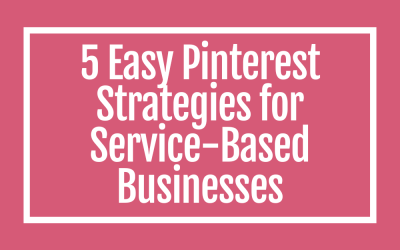
Content Marketing Planning Series Part 2
Quarterly Content Planning Based on Data Insights:
Welcome to the second part of our Marketing Planning Series! If you didn’t read part 1, I highly recommend you check it out right here. In the previous installment, we delved into the importance of data-driven marketing and how Google Search Console can provide valuable insights into your content’s performance.
Now, armed with data, it’s time to translate these insights into a well-crafted content strategy for the upcoming quarter. In this blog post, we’ll explore the intricacies of crafting a data-driven content strategy, reviewing top-performing content, analyzing audience engagement, identifying emerging trends, and aligning your content with your business goals. Let’s dive in!

Crafting a Data-Driven Content Strategy
A data-driven content strategy is like a roadmap that guides your content creation efforts. It’s rooted in insights and objectives, ensuring that every piece of content you produce serves a purpose and contributes to your overall goals. Here’s how to craft a data-driven content strategy:
- Define Clear Objectives: Begin by outlining specific, measurable goals for your content. What do you aim to achieve in the upcoming quarter? Examples could include increasing website traffic, generating leads, or boosting brand awareness.
- Know Your Audience: Based on the data you’ve collected, build detailed audience personas. Understand your audience’s needs, preferences, pain points, and behavior to tailor your content accordingly.
- Content Themes: Identify key themes or topics that resonate with your audience. Consider evergreen topics and those relevant to emerging trends in your industry.
- Content Types: Determine the types of content that work best for your audience. This could include blog posts, videos, infographics, webinars, or podcasts.
Reviewing Top-Performing Content
Before diving into content planning for the quarter, it’s crucial to identify what’s already working. Review the top-performing content from the previous year using the insights gained from Google Search Console. Look for patterns, commonalities, and topics that consistently resonate with your audience.
- Content Audit: Create a list of your highest-performing blog posts, videos, or podcasts based on metrics such as clicks, impressions, and engagement.
- Analyze Engagement: Review user comments, social shares, and any feedback associated with these top-performing pieces. What did your audience like about them? What questions did they have?
- Identify Patterns: Are there recurring themes, keywords, or formats that stand out in your top-performing content? These insights can guide your content planning.
Analyzing Audience Engagement and Feedback
Your audience’s engagement and feedback are invaluable sources of information. Take the time to listen to your audience through various channels, including social media, comments, surveys, and email responses.
- Social Listening: Monitor social media conversations related to your industry or niche. What topics are trending, and what questions are people asking?
- Feedback Surveys: Consider sending out surveys to your audience to gather direct input on their preferences and needs.
- Engagement Metrics: Continue to track engagement metrics on your website and social platforms to gauge the sentiment around your content.
Pinterest Management
WHY HIRE A PINTEREST MANAGER?
As a busy entrepreneur, you’re probably exhausted trying to keep up with all the changes and don’t have time to do #allthethings, so you are ready to outsource your Pinterest management and marketing to someone else so you can get more leads and traffic to your website and grow your business or blog to the next level and you can work in your zone of genius!
Identifying Emerging Trends and Seasonal Opportunities
Staying ahead of emerging trends and leveraging seasonal opportunities is essential for keeping your content fresh and relevant. Here’s how to identify these opportunities:
- Industry Research: Stay updated on industry news, reports, and studies. Look for trends and developments that could impact your content strategy.
- Keyword Research: Conduct keyword research to uncover trending search terms and topics. Tools like Google Trends and keyword research tools can be invaluable.
- Seasonal Calendar: Create a content calendar that incorporates seasonal events, holidays, and trends relevant to your industry.
Creating a Content Calendar for the Quarter
With a clear strategy and insights in hand, it’s time to create a content calendar for the upcoming quarter. A well-structured content calendar helps you stay organized and ensures a steady flow of content that aligns with your objectives.
- Content Themes: Allocate specific themes or topics for each week or month, ensuring they align with your overall strategy and objectives.
- Content Types: Determine which types of content you’ll create for each theme. Consider mixing formats to keep your audience engaged.
- Publication Schedule: Set specific publication dates for each piece of content. Consistency is key, so maintain a regular posting schedule.
Aligning Content with Business Goals
Your content should never operate in isolation from your broader business goals. Each piece of content should serve a purpose and contribute to your overall success. Here’s how to align your content with your business goals:
- Content Mapping: Map each piece of content to a specific stage in your customer journey. Is it meant to attract, engage, convert, or retain customers?
- Metrics and KPIs: Define the key performance indicators (KPIs) that align with your objectives. Track these metrics to measure your content’s impact on your goals.
- Sales Funnel Integration: Ensure your content guides users through the sales funnel, from awareness to conversion. Provide clear calls to action (CTAs) that support your goals.
Best Practices for Content Planning
As you embark on your content planning journey, keep these best practices in mind:
- Consistency: Maintain a consistent publishing schedule to keep your audience engaged.
- Quality over Quantity: Focus on producing high-quality, valuable content rather than churning out numerous pieces.
- Experimentation: Don’t be afraid to try new content formats or approaches to keep your strategy fresh.
- Analytics and Monitoring: Continually analyze and monitor your content’s performance to make data-driven adjustments.
Summary
Quarterly content planning based on data insights is the cornerstone of an effective and results-driven content strategy. By crafting a data-driven content strategy, reviewing top-performing content, analyzing audience engagement, identifying emerging trends, and aligning your content with business goals, you’ll be well-prepared to create and deliver content that resonates with your audience and drives your marketing objectives forward.
Stay tuned for the next part of our Marketing Planning Series, where we’ll explore leveraging ChatGPT to create engaging social media posts from your core content.
The Power of Bicultural Marketing: Expert Insights on Reaching U.S. Hispanics with Jessie Fernández
The Power of Bicultural Marketing: Expert Insights on Reaching U.S. Hispanics with Jessie Fernández Hey there, marketing trailblazers! Have you ever wondered why some brands seem to resonate so well with U.S. Hispanic consumers, while others struggle to make an...
Pinterest Trends Weekly: Amped Up Aesthetics
Pinterest Trends Weekly: Amped Up Aesthetics I'm back with the latest Pinterest trends, and this week, it's all about amped-up aesthetics! From unexpected textures and patterns to bright colors and trending styles, this week's searches on Pinterest are focused on...
5 Easy Pinterest Strategies for Service-Based Businesses to Skyrocket Traffic in 30 Minutes Weekly
5 Easy Pinterest Strategies for Service-Based Businesses to Skyrocket Traffic in 30 Minutes Weekly Hey there, service-based business owners! I get it—your time is precious, and marketing can sometimes feel like just another overwhelming task on that never-ending to-do...
Don’t forget to pin it!








